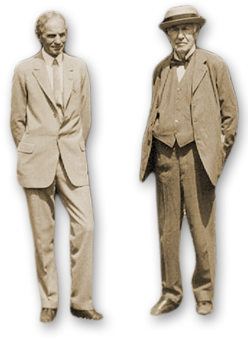Looking Inside Edison’s Contribution to Radiology
January 15, 2019
During a cold day in January of 1896, inspiration struck Thomas Edison. The prolific inventor had recently read reports about Wilhelm Rontgen’s incredible discovery of X-rays just weeks before. Rontgen, a German mechanical engineer and physicist, had experimented with electromagnetic radiation in a wavelength range that eventually become known as X-rays (known contemporaneously as Rontgen rays).
Though Edison was primarily known as an inventor, he was also part of an exceptional scientific community that had made many ground-breaking discoveries during the late 19th century. Unlike some of Edison’s primarily commercial pursuits, this time his inspiration was primarily scientific in nature. In typical Edison fashion, he quickly assembled a team to reproduce Rontgen’s experiments while offering suppositions to the cause and effects of this scientific phenomenon.
Edison had tremendous resources available to him: dedicated staff, specialized equipment and expert scientific literature allowed him to quickly conduct extensive research on the subject. Within the first few months, he had experimented with over 150 different vacuum tube designs, and staff also conducted tests on power generators, photograph plates, and materials designed to affect the ability of an X-ray to penetrate them. Edison’s persistence and hard work paid dividends– he was able to offer inexpensive tubes to researchers who were also experimenting with X-rays.
The March issue of the Electrical Engineer praised Edison’s work by mentioning that his results “cannot fail to be valuable to many a practical workers with Rontgen rays.” He later experimented with several compounds to determine the best fluorescing salt to be used for photographic plates. According to Edison Ford Registrar Matt Andres:
“Edison and his hardworking assistant Clarence Dally’s ultimate contribution in this particular field was the creation of what they called the “fluoroscope”. It was essentially a tapered box with a calcium-tungstate screen and viewing port that in theory could be used by medical professionals in order to view a patient’s hand, foot, or arm when placed in front of an X-ray tube. Unfortunately, his apparatus wasn’t entirely successful because doctors preferred using X-ray photographs due to the fact that they created a permanent record. Edison’s research and experiments did help further scientists knowledge on the subject, however.”
The famous inventor applied for one patent related to his work on X-ray technology in 1896– it was eventually granted in 1907.


